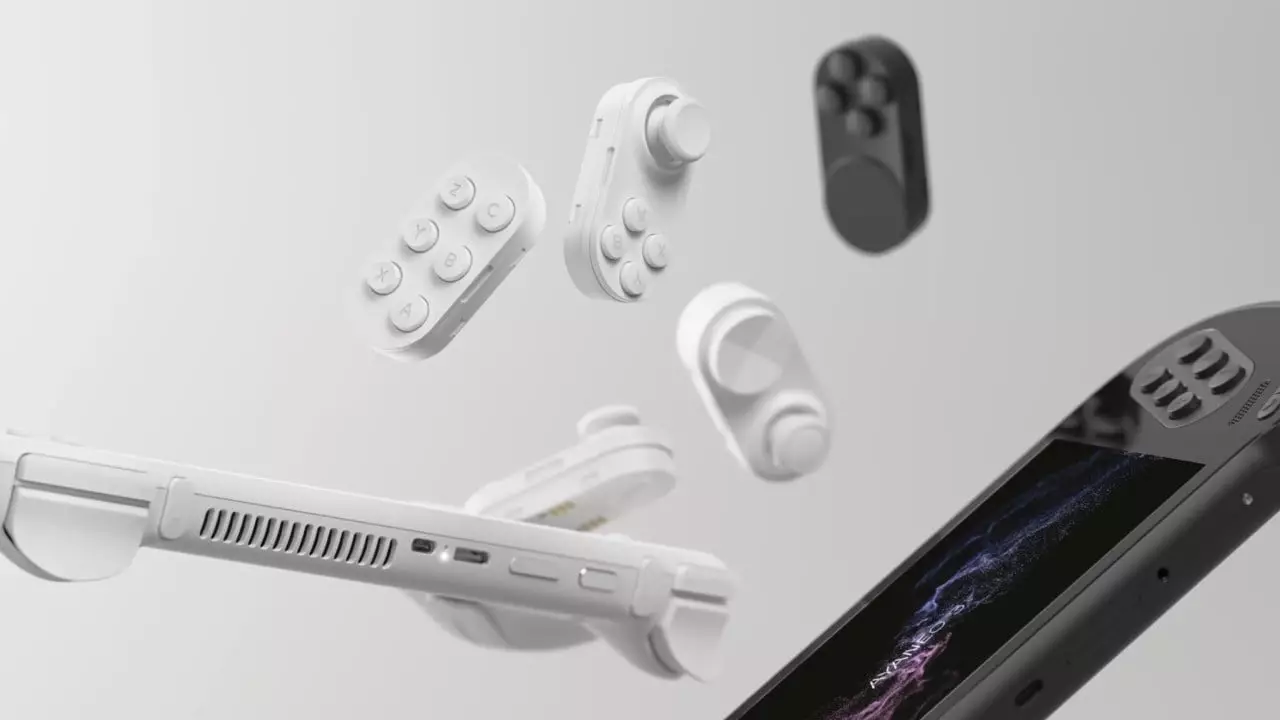As gamers eagerly await the next iteration of Nintendo’s handheld console, commonly referred to as the Switch 2, excitement is drastically tempered by uncertainty. Although leaks are tantalizingly hinting at various enhancements, the fundamental form factor of the new device is expected to resemble that of its predecessor: a tablet-like console paired with detachable controllers. However, given the rapid advancements in technology and gaming ergonomics, the gaming community is left wondering whether Nintendo might innovate beyond this familiar design.
The recent unveiling of AYANEO’s latest handheld gaming device, the AYANEO 3, introduces a revolutionary feature known as “Magic Modules.” This groundbreaking innovation allows players to swap out controllers to suit their preferences, potentially transforming how gamers interact with their devices. With options to rearrange analogue sticks or add specialized modules such as a D-pad and various action buttons, the gameplay experience could become microscopic in terms of personalization. This kind of adaptability, while not entirely new in the gaming landscape—Turtle Beach’s Stealth Pivot Xbox controller has explored a similar path—highlights an ongoing trend towards player customization that many hope Nintendo will consider adopting.
Historically, Nintendo has enjoyed a reputation for creative approaches to gaming technology, yet it has not fully embraced extensive customization in hardware. The original Switch did allow some degree of adaptability through accessories like Hori’s specialized D-pad Joy-Con, yet these options have remained limited within the broader ecosystem. Critics argue that there’s a missed opportunity in not providing gamers more control over their play styles, especially as other companies step up to the plate.
With the AYANEO 3 demonstrating that high levels of customization can lead to a more user-friendly experience, Nintendo must take note. Attaching a degree of modularity to the Switch 2 could open doors to diverse audiences—casual gamers, competitive players, and everyone in between. Imagine a scenario where players could fine-tune their controls specifically for particular genres: racing games, platformers, or fighting games. Such inclusivity would enhance the overall gaming experience and address the varied needs of an evolving player base.
As anticipation builds for the Switch 2 launch, many in the gaming community are expressing hope and even urgency for Nintendo to embrace the customizable innovations epitomized by AYANEO’s latest offerings. In a landscape increasingly dominated by personalized gaming experiences, a shift toward modular design could not only set Nintendo apart but also resonate deeply with a community yearning for a tailored gaming journey. Ultimately, the question remains—will Nintendo seize the opportunity to shape the future of handheld gaming through customization, or will it stick to a familiar formula?


Leave a Reply